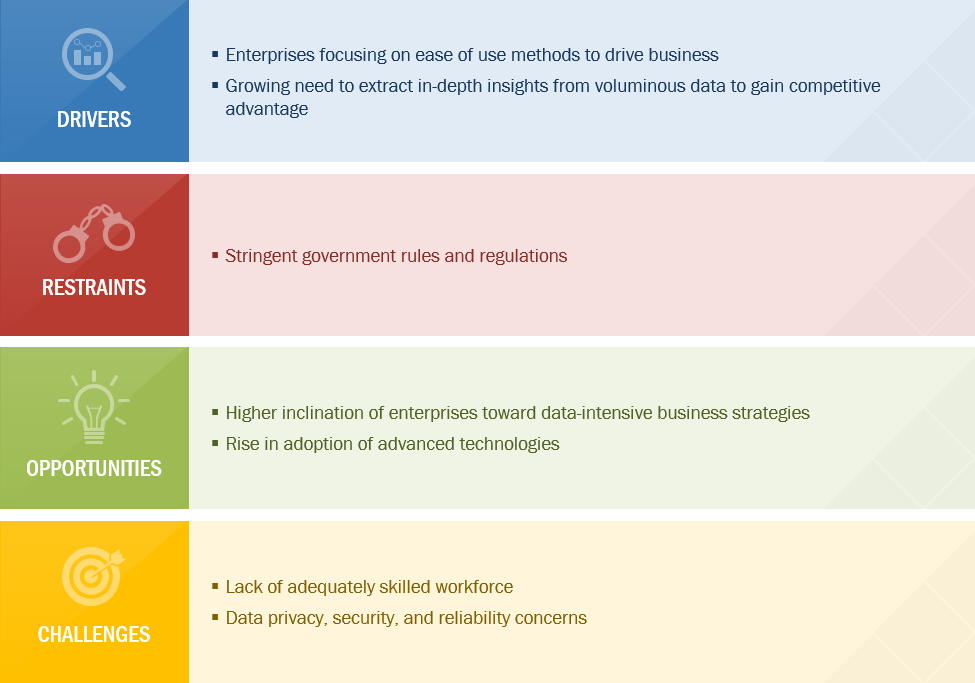Data Science Platform Quadrant Report
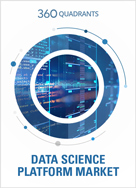
Table of Contents
1 Introduction
1.1 Market Definition
1.1.1 Inclusions and Exclusions
2 Market Overview
2.1 Introduction
2.2 Market Dynamics
Figure 1 Drivers, Restraints, Opportunities, and Challenges: Data Science Platform Market
2.2.1 Drivers
2.2.1.1 Enterprises Focusing on Ease of Use Methods to Drive Business
2.2.1.2 Growing Need to Extract In-Depth Insights From Voluminous Data to Gain Competitive Advantage
2.2.2 Restraints
2.2.2.1 Stringent Government Rules and Regulations
2.2.3 Opportunities
2.2.3.1 Higher Inclination of Enterprises Toward Data-Intensive Business Strategies
2.2.3.2 Rise in Adoption of Advanced Technologies
2.2.4 Challenges
2.2.4.1 Lack of Adequately Skilled Workforce
2.2.4.2 Data Privacy, Security, and Reliability Concerns
2.3 Industry Trends
2.3.1 Value Chain Analysis
Figure 2 Value Chain Analysis: Data Science Platform Market
2.3.2 Use Cases
2.3.2.1 Use Case: Scenario 1
2.3.2.2 Use Case: Scenario 2
2.3.2.3 Use Case: Scenario 3
2.4 Impact of Technologies on Data Science Platform
2.4.1 Machine Learning
2.4.2 Deep Learning
2.4.3 Natural Language Processing
2.5 Regulatory Implications
2.5.1 General Data Protection Regulation
2.5.2 The International Organization for Standardization 27001
2.5.3 Payment Card Industry Data Security Standard
2.5.4 Basel Committee on Banking Supervision 239 Compliance
2.5.5 California Consumer Privacy Act
2.5.6 Health Insurance Portability and Accountability Act of 1996
2.5.7 Health Information Technology for Economic and Clinical Health Act
2.5.8 Sarbanes-Oxley Act of 2002
2.5.9 Personal Data Protection Act
3 Company Evaluation Quadrant
3.1 Overview
Table 1 Evaluation Criteria
3.1.1 Visionary Leaders
3.1.2 Innovators
3.1.3 Dynamic Differentiators
3.1.4 Emerging Companies
Figure 3 Data Science Platform Market (Global) Company Evaluation Quadrant
4 Company Profiles
4.1 Introduction
4.2 Microsoft
4.2.1 Business Overview*
Figure 4 Microsoft: Company Snapshot
4.2.2 Solutions and Services Offered*
4.2.3 Recent Developments*
4.2.3.1 Organic Growth Strategies
4.2.3.2 Inorganic Growth Strategies
4.2.4 SWOT Analysis*
Figure 5 Microsoft: SWOT Analysis
4.2.5 Right-To-Win*
(*Above sections are present for all of below companies)
4.3 IBM
Figure 6 IBM: Company Snapshot
Figure 7 IBM: SWOT Analysis
4.4 Google
Figure 8 Google: Company Snapshot
Figure 9 Google: SWOT Analysis
4.5 SAS Institute
Figure 10 SAS Institute: Company Snapshot
Figure 11 SAS Institute: SWOT Analysis
4.6 Altair
Figure 12 Altair: Company Snapshot
Figure 13 Altair: SWOT Analysis
4.7 Cloudera
Figure 14 Cloudera: Company Snapshot
4.8 Alteryx
Figure 15 Alteryx: Company Snapshot
4.9 Databricks
4.10 Wolfram
4.11 MathWorks
4.12 RapidMiner
4.13 Anaconda
5 Appendix
5.1 Other Significant Players
5.1.1 BRIDGEi2i
5.1.2 Rexer Analytics
5.1.3 Domino Data Lab
5.1.4 Dataiku
5.1.5 Civis Analytics
5.1.6 H2O.ai
5.1.7 RStudio
5.1.8 Rapid Insight
5.1.9 SAP
5.2 Methodology
This report identifies and benchmarks the Data Science Platform market leaders such as Microsoft (US), IBM (US), Google (US), SAS Institute (US), and Altair (US) and evaluates them on the basis of business strategy excellence and strength of product portfolio within the Data Science Platform market ecosystem, combining inputs from various industry experts, buyers, and vendors, and extensive secondary research including annual reports, company press releases, investor presentations, free and paid company databases. They are rated and positioned on a 2x2 matrix, called as ‘Company Evaluation Quadrant,’ and identified as Visionary Leaders, Dynamic Differentiators, Innovators, or Emerging companies.
SAMPLES:
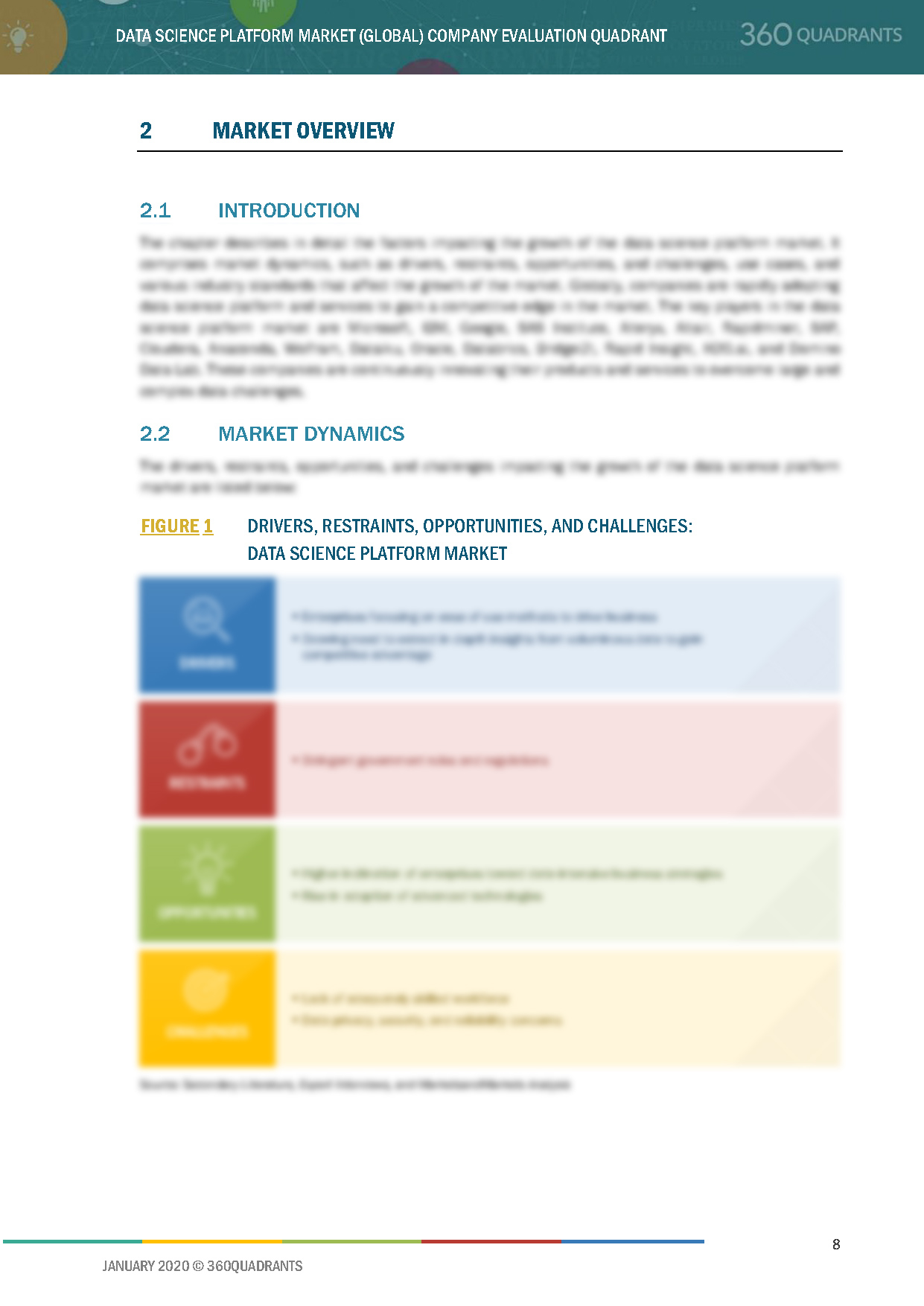
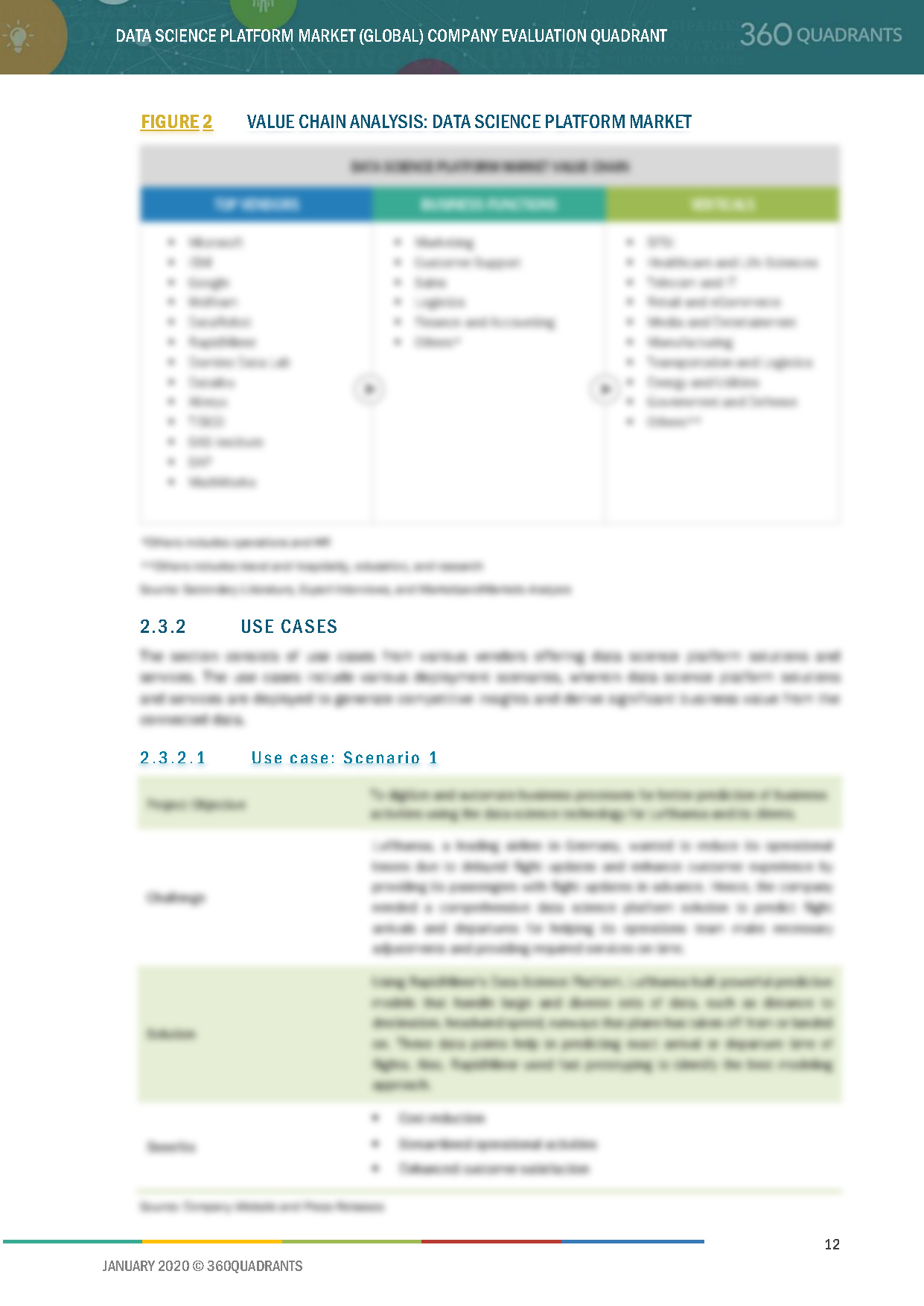
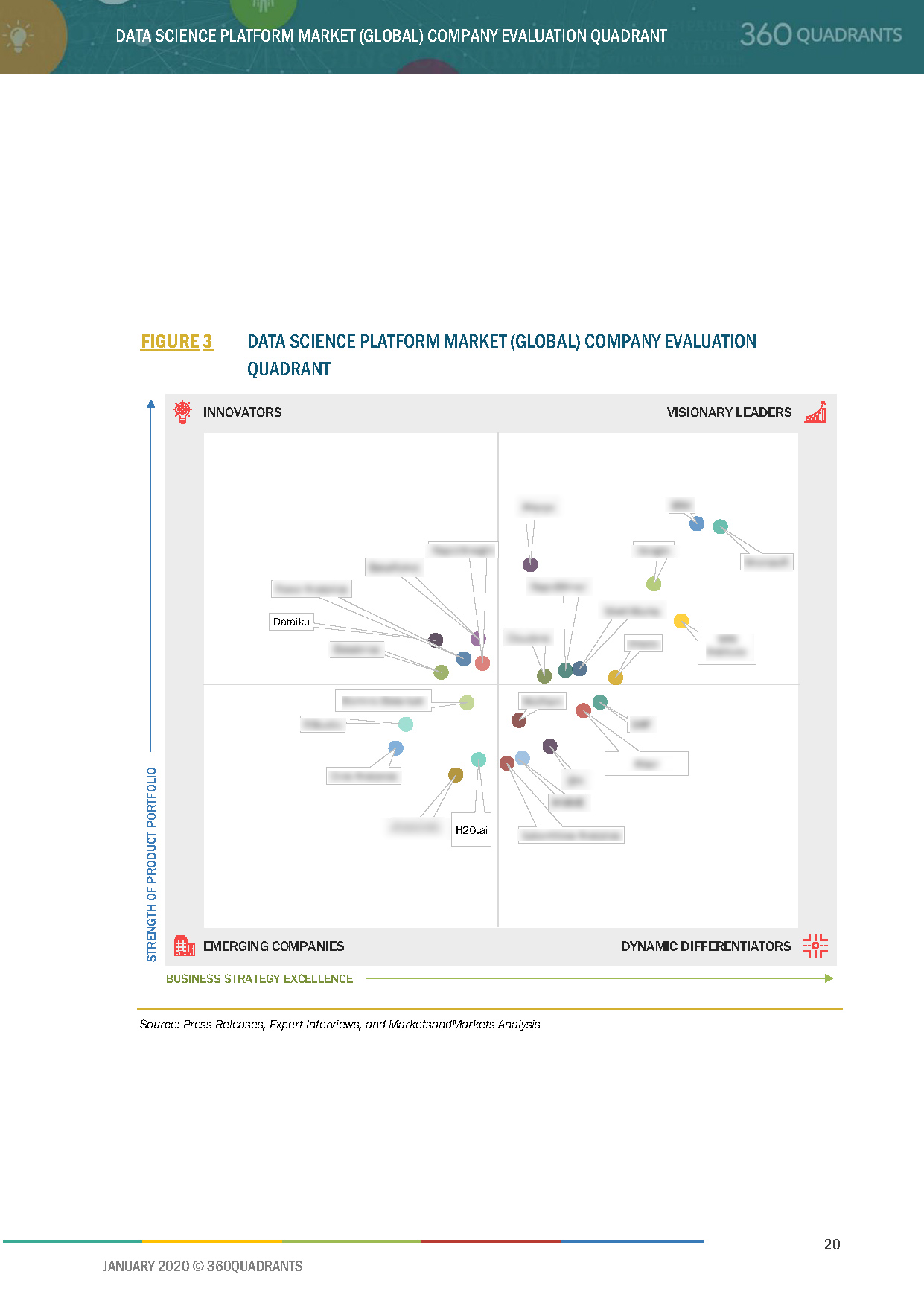
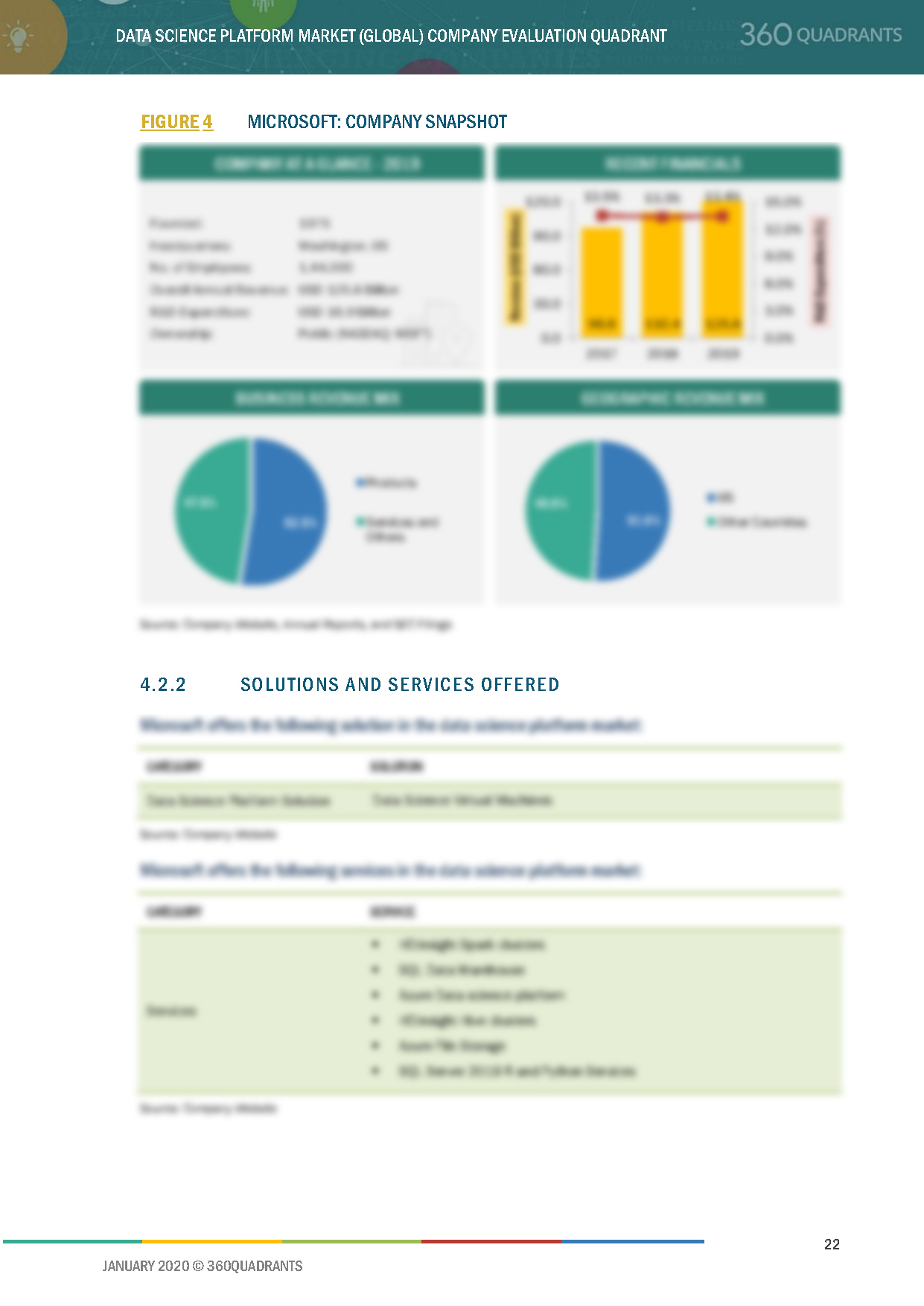
- Updated version of this Quadrant
- Different Company Evaluation Quadrant
- 'Startup Only' Company Evaluation Quadrant
- Region or Country specific evaluation
- Application or Industry specific evaluation ..Read More
- Submit a Briefing Request
- Question about our published research
- Request for evaluation of your organization for specific market
- Request for re-evaluation of Company Evaluation Quadrant ..Read More
